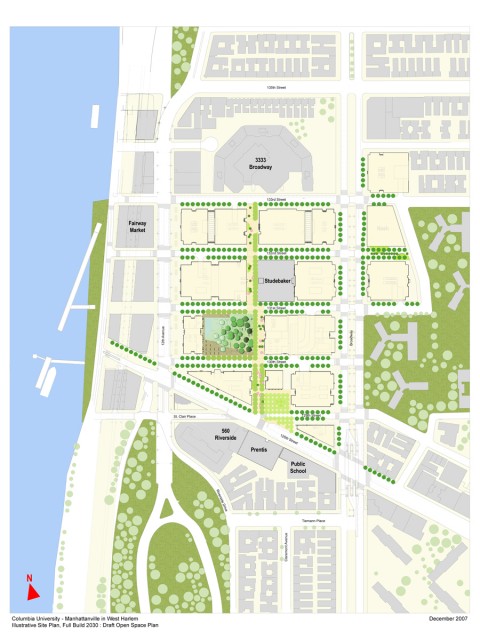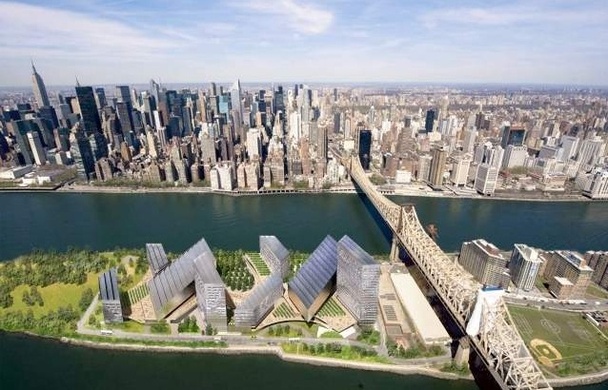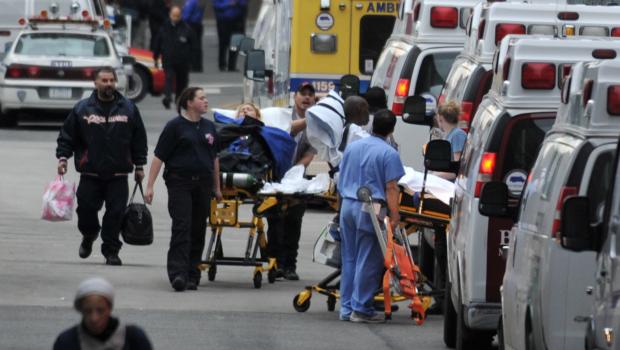
New York is a diverse city fueled by a wide array of industries, but when it comes to size and community impact, medicine and education are probably the largest, most influential projects after the city’s own infrastructure, real estate, and large-scale industry. These sectors, often called “Eds” and “Meds,” bring tremendous change to particular areas of the city, often dominating their neighborhoods. While hospitals and universities do not directly add to the city’s tax base because they have tax-exempt status, they indirectly serve to increase surrounding real estate values and other taxable transactions that are stimulated by growth in eds and meds. The ultimate advantage that eds play in a city’s growth, however, is their ability to reinforce the city’s attractiveness for high-wage workers.
In the coming decades, New York will see the development of two new major college campuses: Columbia University’s new Manhattanville Campus and Cornell University’s NYC Tech Campus on Roosevelt Island. Those two major projects, along with New York University’s continuing amoeba-like expansion downtown, underscore the importance that education, as an industry, plays in the character and productive capacity of New York City.
While all of these plans are primarily focused on new construction as opposed to the renovation of old structures (except for three buildings, including the old Studebaker building, in the Manhattanville plan), it is important not only to ensure that new structures pass environmental muster, but also that the plans as a whole are committed to making the city a greener place, as well as a more intelligent one.
For instance, Columbia’s Manhattanville in West Harlem campus will host a new brain sciences center building, new centers for the Business School and School of International and Public Affairs, a high school focused on math and science, and other academic and laboratory features. However, it also includes the development of park space along the Hudson River between 129th and 133rd Streets. In addition, Columbia intends to extend its growing “Green Roofs” program to the Manhattanville campus. The plan has even obtained LEED status as a neighborhood design plan. The Manhattanville Campus seems to have an environmentally friendly focus from the outset, and the first aspect of the project that is being constructed is the Hudson River park space, which is currently in development.

Turning to Cornell’s NYC Tech campus, the architectural beauty of the plan has captivated writers and critics since Cornell defeated Stanford for the Tech campus bid and the plan was released in 2011. In particular, the five-story academic center designed by Thom Mayne has drawn tremendous praise for its design. While the plan can certainly be lauded from an architectural standpoint, it is also designed to be a “net zero” structure, meaning it produces as much energy as it consumes. While it is not clear whether “net zero” guidelines will be applied to all buildings on campus or just the Mayne structure, the concept is interesting. Through solar power in particular, along with plans for geothermal wells and even modern-day waterwheels in the East River to harvest hydro-electric power from its current, Cornell has high hopes indeed for a green campus on Roosevelt Island.

While the city’s new college campuses, and even their extant ones, have strong environmental policies (and are striving to further green-up their campuses), it is important that city policymakers ensure that environmental friendliness in these plans extends beyond green rhetoric. The promises that planners have made need to be converted into strategies that are actually implemented by the time that these campuses are finally finished.
As for the medical side of the “eds” and “meds” dynamic, Hurricane Sandy actually offers an opportunity for the city’s damaged hospitals to (a) further diversity their sources of power and (b) redesign their structures in environmentally friendly manners with the goal of (c) building a larger environmental consciousness within the city’s hospital community. There are currently a wide array of bids up for hospital repair and construction in New York County in the wake of the storm, and hospital administrators must recognize that this gives them an opportunity to renovate and replace with an eye to environmental friendliness rather than simply replacing or repairing older, environmentally-stubborn structures. In particular, Bellevue Hospital, through its new coordinated effort with NYU’s Langone Medical Center, has a tremendous opportunity to build on the University’s environmental efforts and apply them not only to the older aspects of the physical plant at Bellevue, but also to new construction through NYU and necessary renovations post-Sandy.
That’s not to say that only storm-damaged hospitals could increase their green focus; clearly, there should be strong environmentally friendly policies at all city hospitals. Furthermore, Mayor Bloomberg has proposed $500 million in emergency hospital and school repair funds, and it is important that an environmentally friendly focus be applied to that spending.

Whether it is new construction such as Cornell in NYC or Manhattanville, or renovating damaged older structures like Bellevue Hospital, it is important that “eds” and “meds,” two driving forces behind the city’s growth and innovation in the global city era, actually act on their green rhetoric. The city’s environmental future is far too important to for it to be ruined by unfulfilled promises. Ultimately, policymaking pressures and anti-oversight measures should be employed to ensure that “eds” and “meds” do not just speak the rhetoric of environmental friendliness, but that they actually act on their promises and produce environmentally friendly structures.